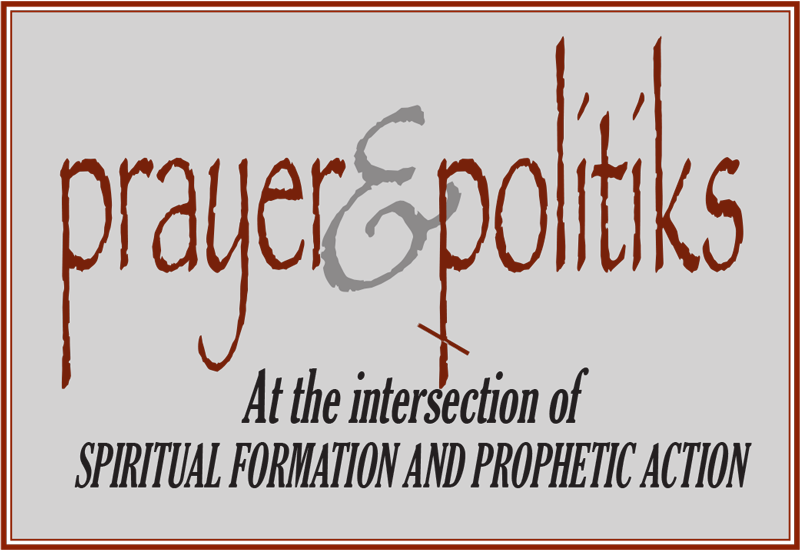Ken Sehested
Invocation. “Inspired by Love and Anger.” —Iona Community
§ § §
Given the state of public affairs in these riven United States, I too frequently find myself in a foaming-at-the-mouth froth of anger. Utter disgust, flinging foul imprecations and anathemas (mostly under my breath). I catch myself, with James and John (Luke 9:54), beseeching Jesus for permission to rain down fire from Heaven on the unrighteous, the villainous, the unscrupulous racketeers who pantomime as public servants.
And I am pressed, at the old hymn puts it, to “take it [this urge] to the Lord in prayer.”
Few topics are as ambiguous for people of faith as anger. All of us get angry from time to time. But something inside us tells us we’re not supposed to be angry—even though sometimes it feels utterly righteous.
Mostly, we are taught that anger is wrong, a temptation to vengeance. Think of the Star Wars movie Emperor Palpatine taunting Luke Skywalker: “Give in to your anger. With each passing moment you make yourself more my servant.”
The Bible itself seems to be ambiguous. Jesus appears to forbid it when he says “every one who is angry with his brother shall be liable to judgment.” (Matthew 5:22—although a textual note adds: “Other ancient authorities insert ‘without cause’ in this verse. The rest of this text involves Jesus’ warning about insulting behavior.)
God surely gets angry. A lot. The first time in Scripture where God threatens divine wrath is promised against the Israelites should they mistreat migrants, widows, and orphans (Exodus 22:21-24).
How come God gets to, and we don’t? The Psalms, in particular, are packed full of angry statements, though we almost never read those in polite company. (For more, see “Angry words in the Psalms: A collection of texts” https://prayerandpolitiks.org/articles-essays-sermons/angry-words-in-the-psalms/.
§ § §
One Saturday evening a church member called my wife about worship the next morning. She had assigned him a text for reading in the service.
“I made a mistake and wrote down Psalm 109,” John said.
“That’s the one,” Nancy replied.
“Are you sure?” he said in a puzzled voice. “This one’s not very nice—and you want me to read this in church?”
§ § §
Declaration of faith. “We are a gentle, angry people, and we are singing, singing for our lives.” —“Singing For Our Lives,” Holly Near and Ronnie Gilbert
§ § §
Sometimes we muster the will power to “swallow” our anger. Doing that, however, is like swallowing a mouth-full of nails. It usually produces serious digestive problems. (Have you ever heard someone described as “eaten up with anger”?)
Psychologically speaking, swallowing anger leads either to depression (when internalized) or aggression. I am convinced you can no more stamp out anger than you can destroy energy. It simply assumes another form.
I probably have as many questions about anger as anyone. But I know four things for sure.
- If you’re never angry, you’re not paying attention. Conflict is constitutive to life as we know it, and transforming such conflict, envisioning and practicing redemptive response, is the heart of faith.
- Anger is the appropriate response to every form of abuse and injustice. It is, in fact, the animating presence of God; for life as we know it is not finally fated to destruction and will be transformed. This is the promise on which faith is formed and engaged.
- Yet anger’s sway easily becomes a cover to act out our own fears and vanities—and is especially brutal when invoking religious identity and transcendent justification. There is no vengeance quite as brutal as when one claims divine authority.
- As with all such weighty matters, talking about the appropriate use of anger is immeasurably easier than practicing it. We remain acquainted with failure; it is risky; and sometimes bruising. But from such disturbances—when we learn how to enter into and transform conflict without picking up a stick—is how faith is developed.
A good friend once shared an anecdote about the dilemma of handling anger as depicted in a favorite episode of an old television show, “Hill Street Blues.” Ramona wrote:
“The show dealt with the ugly realities of daily life in the inner city. I watched the show faithfully and considered the characters portrayed as friends—people who understood the violence of poverty and the drug culture, realities that characterized my rough neighborhood.
“In one episode, one of the young police officers was being praised by his sergeant for how well he had handled a series of conflicted encounters—a case of domestic violence, an arrest of a drug dealer, and a confrontation with a quarrelsome prostitute—all in a night’s work. The officer thanked him for the encouragement and then asked him, ‘But, sir, where do you put the anger?’”
All of us, virtually every day, in small, personal ways or in large public ones, encounter conflict and wrestle with the question about where to “put” our anger. Every episode is an exercise in faith development and the occasion for deepening grace, grace that calms our fretful habits, provides buoyancy amid the storms, and unleashes imagination and energy for building bridges across walls of enmity.
Faith formation and the ministry of reconciliation are interwoven in the drama of redemption. Getting to that place of recognizing how the bile of anger poisons our spirits, we come back again and again to face the challenge Jesus put to James and John; and here the King Jimmy language seems most eloquent: “Ye know not what manner spirit ye are of.”
Becoming conscious of that (unholy) spirit, acknowledging its sweet craving, facing the fact that this, too, must be rejected, must be put aside, its lustful allure laid down, to face the fires of our own purification: these are the terms of forgiveness. For we do not often “know not what spirit ye are of.”
One of my favorite quotes is from the legendary migrant farmworker organizer (and devout Roman Catholic), Cesar Chavez, who wrote: “I am a violent man learning to be nonviolent.” None of us is exempt from the tantalizing allure of enacting angry vengeance: in opposition to the rule of greed, in protection of the vulnerable. In truth, people shaped in the Way of Jesus are called to do both of these things. The work of disarming the heart, and the call to disarm the nations, intersect and work in tandem.
The work of salvation is always personal but never private. Lives lived in penitential concession—walking humbly with God—is the fulcrum whereby we leverage the work of doing justice and loving mercy. In the concise, startling syntax of Luke, “The one to whom little is forgiven, loves little” (7:47).
It is disorienting, and frightening, to confront the ways our self-justifying lies and twisted hearts and confounded minds have been caught up in the world’s tragic spiral of vengeful and suppressive malice. Only the work of grace is strong enough to loosen these knots. Only then can the fire-refining work of the Spirit thereby instruct us in expressing the love of God for all of creation as a flame that heals and reveals but does not scorch or consume.
§ § §
Benediction. “While I’m alive / Let there be peace / Let these cries / Of anger cease / Far and wide / Before I die / Let there be peace.” —Ruth Moody, “Far and Wide”
# # #

